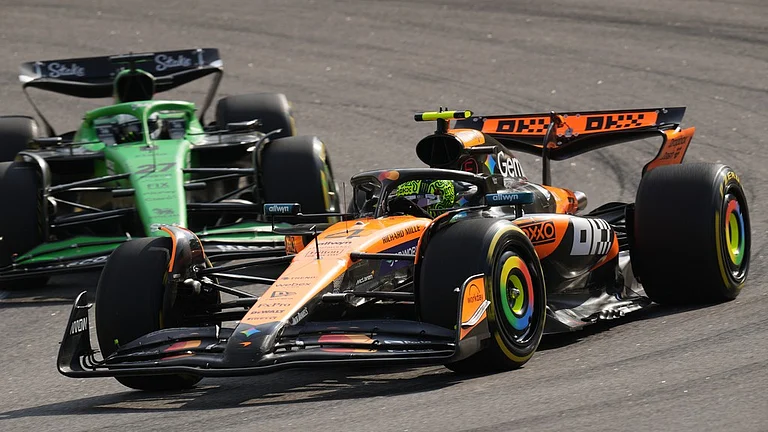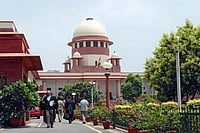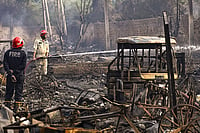The government did not elaborate what it thought was gossip or rumour nor what thetruth was. As a senior government official told Outlook: "We don’t wantto sour a relationship because of a false step here or there. They’ve had atransition, and we want to let it settle down." There was concern that the delicatebalance between the monarchy and fractious party politics, especially given the Maoistinsurrection, could be undermined by suspicions clouding Gyanendra’s ascendancy.
The caution was understandable. The last time India’s relations with Nepal plungedwas during Rajiv Gandhi’s days in the late eighties, when he resorted to economicsqueeze. Much of the megaphone diplomacy those days was played out through the media.India had been unhappy that Nepal (in 1987-88) procured from China anti-aircraft guns,testifying that not only had the Chinese made political inroads into the palace but thatKathmandu was willing to play the Chinese game.
Officials here point out that anti-India feelings in Nepal are now "less thanskin-deep". And Nepal’s relations with China, on the other hand, is the verypicture of congeniality. Instability in Nepal could consequently have an inimicalspillover effect on India.
Diplomatic sources say large "background pressure" was brought to bear on themonarchy in 1988 after Kathmandu said it wanted a Most Favoured Nation (mfn) status andthat the 1950 Treaty of Peace and Friendship, the bedrock of Indo-Nepal ties, needed to bereconsidered. (mfn won’t allow the current status of open borders between Nepal andIndia to continue.) Subsequently, even to procure aspirin, for example, Nepal had to runthe gamut of Indian bureaucratic red tape. The delays led to crippling shortages of fueland gas and fanned disaffection against the monarchy. Kathmandu turned to China for help,but the single highway from Tibet through the high mountains collapsed after a week.Ultimately, in 1990, the monarch relinquished most of his powers and agreed to aconstitutional monarchy with parliamentary democracy.
With the Indo-Nepal treaty coming up for renewal later this year, it will provide Indiathe opportunity to bargain with Nepal if the scenario in Kathmandu is not to NewDelhi’s liking. Diplomatic sources now say it is the government’s wish to see astable Nepal emerge from this current round of buffeting, with no prospect of returning toan autocratic dispensation. But, says Dr Parmanand, a long-time Nepal watcher:"Constitutionally, I don’t think that the monarchy has any significant role toplay anymore. As things are emerging, no monarch will take the risk of brushing asidepublic opinion. Then again, politics is the art of the possible."
A.R. Deo, a former envoy to Nepal, says: "The situation that we’ve beenpresented with is as much a challenge to India as it is to Nepal. For Nepal, it’s amatter of what structure emerges from this crisis. For India, what the consequences ofthat would be for its security."
Despite media reports about King Gyanendra being a hardline monarchist and possiblypro-China, government officials insist he is a pragmatist who realises the importance ofhaving stable relations with India. The calculation: Nepal needs India much more thanNepal needs China. Kathmandu is overwhelmingly dependent on New Delhi for its economicsurvival.
But what worries government officials most is the penetration Pakistan seems to havemade into Nepal, a phenomenon that became painfully obvious when IC-814 was hijacked in1999. That apart, in the wee hours of June 2, after the massacre at the palace, Pakistanienvoy to Nepal Fauzia Nasreen called up Islamabad and had a brief conversation, partly inUrdu and partly in English, during which the foreign office was given to understand that"the murderer has been pronounced king". The palace announcement came some 12hours later. The government’s assessment: such a quick and authoritativedetermination testifies to the level of Islamabad’s penetration into the palace.Instability in Nepal could only provide a better staging post for Pakistan’s ISI..

























